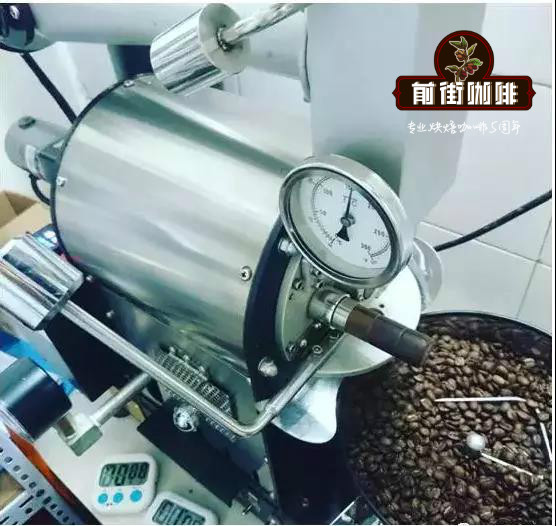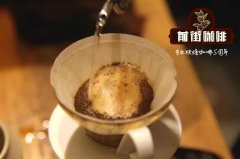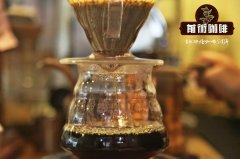How many kinds of beans are there in Yunnan coffee? Which is better, Baoshan coffee or Xishuangbanna coffee?

Professional coffee knowledge exchange more coffee bean information please follow the coffee workshop (Wechat official account cafe_style)
It is also called Yunnan Coffee. Why does it taste different?
-- because the origin is different! There is a difference of 1000 miles between Xishuangbanna and Baoshan coffee across thousands of mountains-can it taste the same?
When it comes to Xishuangbanna and Baoshan coffee, the topic opens up, which can be said to be the two representative producing areas of Yunnan coffee, and there are differences in planting history, production scale, processing methods, sales and promotion. But which quality is better and tastes better? It is difficult to sum up in a word, it can only be said that both have their own characteristics. This is the conclusion drawn from repeated comparisons between Xiumen Coffee and the two places over the years.
First of all, let's take a look at the regional differences between the two regions.
Baoshan coffee generally refers to the coffee produced in Baoshan City, but it is mainly concentrated in the Nujiang River Valley of Lujiang Dam in Longyang District, the south bank of Yannu River, and Liuku Town in Nujiangzhou to the north. It is located between longitude 98 °25 "100 °02 'east and latitude 24 °08" 25 °51' north, along the south bank of the Nujiang River and backed by Gaoligong Mountain. The climate not only has the subtropical monsoon climate, but also belongs to the dry-hot valley climate, and the terrain undulation is relatively large, from the elevation of 400m Bazi to the alpine zone of 3000 meters above sea level, the three-dimensional climate is more obvious. The dry and wet season is more obvious, rainy in summer and dry in winter. By 2015, Baoshan Coffee has 180000 mu, with an output of 28000 tons.
(Xishuangbanna area with more subtropical amorous feelings and wetter climate)
Xishuangbanna coffee covers a wide range, including Simao District, Menglian, Ximeng, Ninger, Mojiang, Jiangcheng, Jingdong, Jinggu and other counties under the jurisdiction of Xishuangbanna, as well as Menghai County, which borders Xishuangbanna, because of the sales channels, it is sometimes included in the category of Xishuangbanna coffee, so in terms of area and output, Xishuangbanna absolutely occupies the first place, planting 1 million mu of coffee from 2015 to 2016. The output is 139000 tons, accounting for more than half of Yunnan coffee.
Xishuangbanna is located in the subtropical monsoon climate between latitude 22 °02 min Mel 24 °50' and longitude 99 °09 Mel 102 °19'E. it is located in the southwest of Baoshan area, with an annual precipitation of 1100 won 2780 mm. Compared with Baoshan area, the average temperature is higher, the frost-free period is shorter, the rainfall is higher, and the climate is wetter.
From the perspective of planting history and development form, Yunnan coffee was first introduced in 1892, while large-scale coffee cultivation began in Baoshan in the 1950s, when coffee beans were mainly sold to the Soviet Union. In the 1960s, when Sino-Soviet relations broke down, Baoshan coffee production was suspended for a time, but retained some of the iron pickup and bourbon varieties of coffee trees, locally known as "old varieties". It was not until the 1990s, with the expansion of Nestl é coffee base in Yunnan, that coffee cultivation in Baoshan area resumed and the area continued to expand, but the new varieties were mainly Katimo, commonly known locally as "new varieties". Compared with the old varieties, the yield is higher, the ability of resistance to diseases and insect pests is strong, but the taste is inferior.
The cultivation of coffee in Baoshan, especially in Lujiangba area, is relatively scattered, basically in the form of farmers producing and selling themselves. Each farmer has as little as two or three mu or more than dozens of mu of coffee, which is managed by himself and processed by a small machine after picking. Finally, it is sold in the form of coffee with shell beans, and the coffee merchants will shell and select the acquired shell beans and then sell them. Therefore, the quality of coffee produced is mixed, and the backward processing methods of farmers affect the quality of coffee to a great extent.
Xishuangbanna coffee has been industrialized since 1988, and the planting scale is large, and it is mostly in the form of bases plus farmers, with each base ranging from hundreds of mu to thousands of mu. The base manager contracts the coffee field to farmers, who are responsible for management. Finally, the picked coffee is sold to the base in the form of fresh fruit, which is processed and sold by the base. Although the processing facilities are relatively advanced, at first, as the raw material supply base of Nestle instant coffee, Xishuangbanna coffee did not pay much attention to quality. In recent years, with the development and demand growth of the domestic coffee market, there is also a base to pay attention to the improvement of varieties to exquisite processing efforts, the quality has also been greatly improved.
Related recommendation: Yunnan small coffee beans how to brew Yunnan small coffee brand recommendation
Important Notice :
前街咖啡 FrontStreet Coffee has moved to new addredd:
FrontStreet Coffee Address: 315,Donghua East Road,GuangZhou
Tel:020 38364473
- Prev

Does Yunnan coffee taste good? Taste, flavor and cooking method of Katim in Yunnan
Professional coffee knowledge exchange more coffee bean information please follow the coffee workshop (Wechat official account cafe_style) Yunnan Katim treatment: red cherry sun treatment varieties: Katim altitude: 1450-1550 m Yunnan is located between latitude 15 north latitude 15 to the Tropic of Cancer, most areas are 1000-2000 m above sea level, the terrain is mainly mountainous, sloping land, and undulating, fertile soil
- Next

The winner of Yunnan Raw Bean Competition Yunnan small Coffee beans description of the taste and flavor of Yunnan Congang coffee
Professional coffee knowledge exchange more coffee bean information please follow the coffee workshop (Wechat official account cafe_style) Yunnan Coffee, China. It was introduced around the eighteenth century. At present, the planting area accounts for more than 90% of the mainland, and it is mainly exported to Europe and the United States as raw materials. With the development of boutique coffee, the quality here is becoming more and more stable, and the management system is expected to be localized, informatized, and
Related
- Detailed explanation of Jadeite planting Land in Panamanian Jadeite Manor introduction to the grading system of Jadeite competitive bidding, Red bid, Green bid and Rose Summer
- Story of Coffee planting in Brenka region of Costa Rica Stonehenge Manor anaerobic heavy honey treatment of flavor mouth
- What's on the barrel of Blue Mountain Coffee beans?
- Can American coffee also pull flowers? How to use hot American style to pull out a good-looking pattern?
- Can you make a cold extract with coffee beans? What is the right proportion for cold-extracted coffee formula?
- Indonesian PWN Gold Mandrine Coffee Origin Features Flavor How to Chong? Mandolin coffee is American.
- A brief introduction to the flavor characteristics of Brazilian yellow bourbon coffee beans
- What is the effect of different water quality on the flavor of cold-extracted coffee? What kind of water is best for brewing coffee?
- Why do you think of Rose Summer whenever you mention Panamanian coffee?
- Introduction to the characteristics of authentic blue mountain coffee bean producing areas? What is the CIB Coffee Authority in Jamaica?

